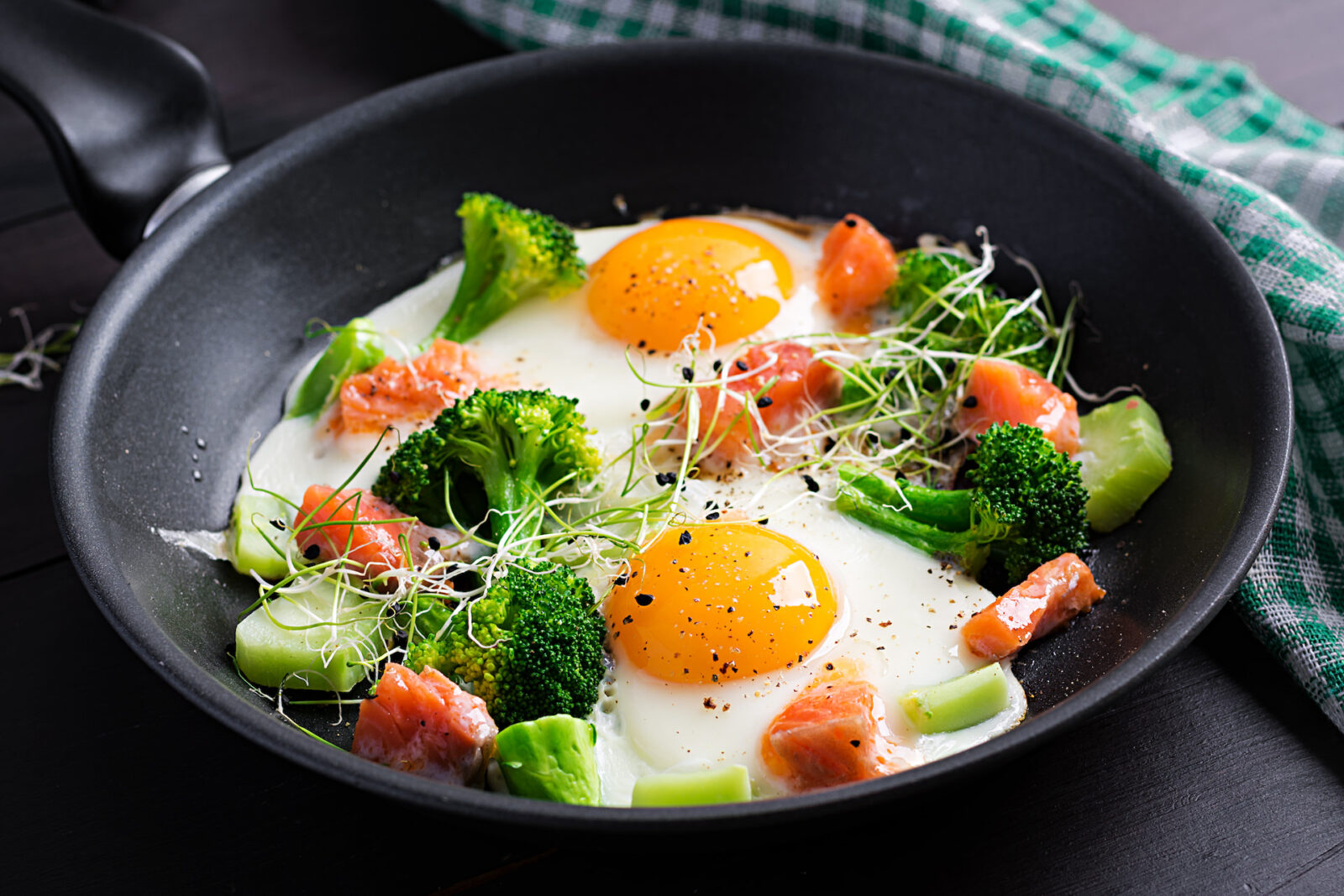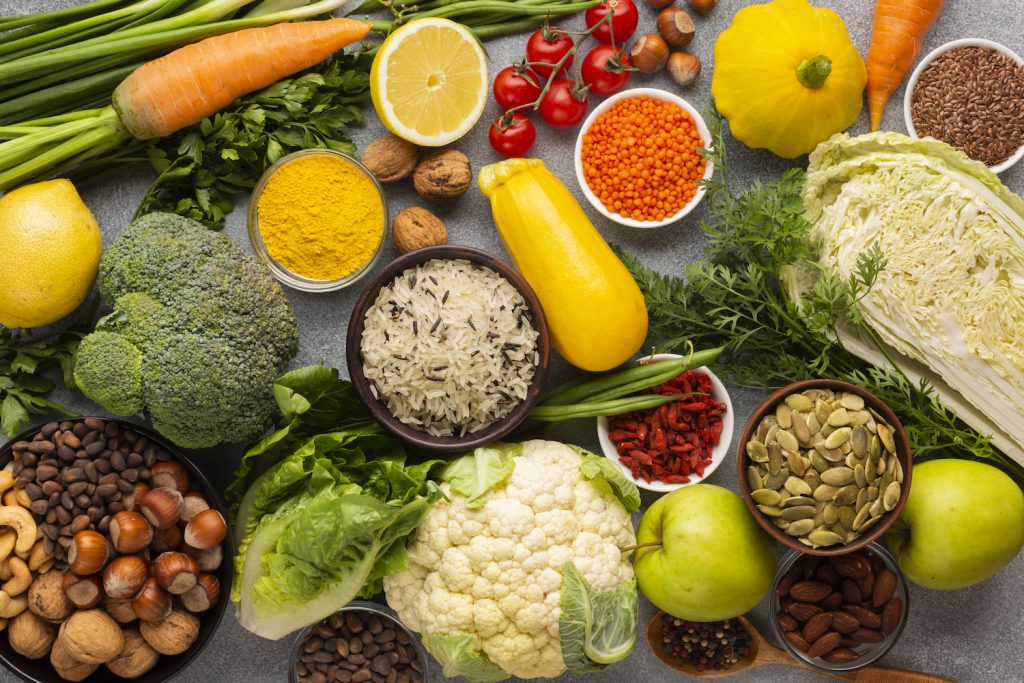If you often get sick with infectious diseases, your vision in dim light is impaired, your nails are brittle and your skin is dry, your hair is dandruff-prone, and your mucous membranes are inflamed, the cause may be a vitamin A deficiency.[1]
Vitamin A Benefits and Overview
 Functions of vitamin A in the body:
Functions of vitamin A in the body:
- Vision. There are four types of vitamin A in the retina of the eye.
- Normal development of mucous membranes. Ensures the production of mucus in the eyes, lungs and digestive tract and protects the mucous membranes.
- Maintaining immune function. Also called the anti-infective vitamin. The main immune booster.
- Necessary for growth, development and nerve cell function.
- Ensuring fertility.[2]
We get vitamin A from plants as precursors, mainly in the form of beta-carotene. From animal foods, such as meat and dairy products, we get it preformed as retinyl palmitate, which is converted to retinol in the intestine. In addition to food, we can also get retinol from dietary supplements and multivitamin tablets.
When it comes to beta-carotene, it is important to keep in mind that it needs so-called helpers, which are vitamins C and E and selenium. Beta-carotene obtained from whole foods is a good source of vitamin A and reduces the risk of certain cancers. However, as a dietary supplement, it can have the opposite effect and be harmful to your health.
Sources of vitamin A and foods containing it
Below are rich and good sources of vitamin A. What is the difference between them? A rich source is a food that contains at least 160 IU of vitamin A per 100 g, and a good source is one that contains 80-160 IU of vitamin A.
At this point, it would probably be appropriate to explain what this RE means. RE is a retinol equivalent and is often used as a unit instead of μg, because as already written, vitamin A is present in food both as precursors (e.g. beta-carotene) and as preformed (retinol). Since 2–24 μg of precursors are needed to obtain 1 μg of retinol, RE was invented to make it easier to compare different sources of vitamin A.
The richest food sources of vitamin A are liver and fish, but it is also found in many plants and vegetables.
 Rich sources (at least 160 RE/100 g):
Rich sources (at least 160 RE/100 g):
- Meat: fried beef liver (29,300 RU), cooked chicken liver (13,000 RU), liver pâtés (4,700-11,000 RU).
- Fish: cooked eel (1650–3380), smoked eye (940 RE) and canned cod liver (4170 RE).
- Boiled egg (263 RE).
- From dairy products: butter (708 RE), spreads and margarines (270–400 RE), most cheeses (166–263 RE), whipped cream 35% (333 RE), sour cream 20% (201 RE).
- From plants: dried rosehips (950 RE), boiled sweet potato (675 RE), stewed carrots (820 RE), dandelion leaves and fresh dill (506–508 RE), kale (450 RE) and spinach (fresh 274 RE, cooked 322 RE).
Good sources of vitamin A (80 – 160 IU/100 g)
- Cooked pumpkin (88 RE), chokeberry berries (94 RE), lettuce (82 RE), papaya (81 RE) and persimmon (79 RE).
Vitamin A suitability and amounts
Vitamins are divided into fat-soluble and water-soluble. Vitamin A belongs to the first group, the fat-soluble vitamins. This is important because fat-soluble vitamins are stored in fatty tissue and accumulate in the body if they are consumed in excess on a regular basis.
So how much vitamin A should we consume? The Estonian national recommended daily intake of vitamin A is 900 IU for men and 700 IU for women. Elderly people should consume 800-900 IU and breastfeeding mothers 1100 IU. These recommendations also take into account factors such as watching screens, which puts a lot of strain on the eyes, and developmental changes, specifically earlier puberty and the onset of childbearing age.
Just looking at the list of rich sources of vitamin A, you could say that if you eat a sufficient amount of real food (i.e. don't starve yourself and don't only eat junk food and sweets), you will easily get the necessary amount of vitamin A, whether you are a strict vegetarian, a vegan, or an omnivore.
Vitamin A deficiency and symptoms that indicate it
Just looking at the list of rich sources of vitamin A, you could say that if you eat enough real food (i.e. don't starve yourself and don't just eat junk food and sweets), you can easily get the amount of vitamin A you need, whether you're a strict vegetarian, a vegan, or an omnivore. Vitamin A deficiency is most common in Africa and Southeast Asia.
Symptoms of vitamin A deficiency can vary in severity. Some people may have more serious complications than others. Below are several possible symptoms you may experience:
- Dry skin
- Dry eyes
- Hemeralopia (visual impairment in the dark)
- Infertility and difficulty getting pregnant
- Late growth
- Throat and chest infections
- Poor wound healing
- Acne and rash
Vitamin A overdose and side effects
When looking at the vitamin A content in liver products, the question arises about the upper limit. Vitamin A poisoning is mainly associated with animal sources and dietary supplements. Pregnant women should especially review the amounts of vitamin A in food and tablets. Both a deficiency and an excess of vitamin A during pregnancy are associated with fetal malformations.
Although there have reportedly been no cases of poisoning from foods rich in vitamin A in the Nordic countries, it is still worth being careful.[3] Especially those who take vitamin A supplements or multivitamins. Although the link between vitamin A and bone loss has not been clearly confirmed in studies, the Estonian government still recommends that postmenopausal women who are at higher risk of osteoporosis and fractures, limit retinol intake to 1,500 IU per day.
The lowest amount of vitamin A that causes poisoning has been 7,500 IU per day for six consecutive years.[4] This level of vitamin A overdose could be achieved by eating 100 g of liver products every day.
Among the side effects, there is evidence that excessive consumption of animal foods rich in vitamin A can interfere with the absorption of vitamin D.[5] This is worth keeping in mind, especially in our climate, where vitamin D is too low for many people.
Excess vitamin A is stored in the liver and can cause vision problems, bone swelling, dry and rough skin, and mouth ulcers.
Vitamin A – safe consumption
So where is the safest place to get vitamin A? The first recommendation is simple, eat a balanced, whole food diet. If you take supplements, make sure they don't contain retinol or beta-carotene. Neither is generally a good idea to take as a supplement. And even if you love dairy and meat products, still eat carrots and green leafy vegetables. That's where you get important antioxidants and fiber, which you especially need with meat.

Allan Randlepp
NutritionistAllan is a nutritionist and trainer whose favorite topics are lifestyle and longevity, including nutrition and physical activity.
What do keto diet advocates not tell you?





